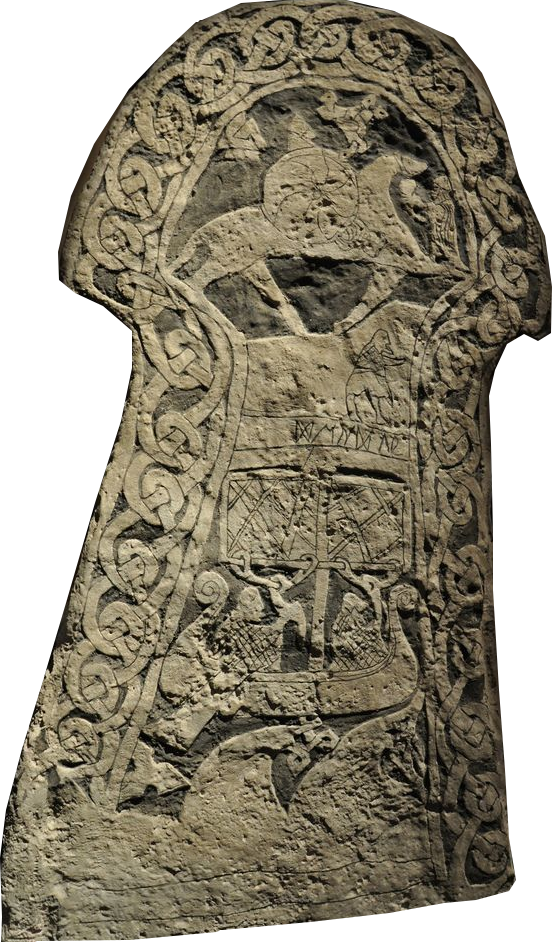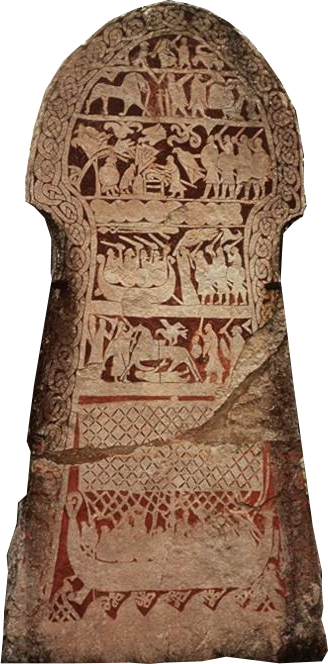Ancient Psychedelia: Alien Gods & Mushroom Goddesses
Online Book - Chapter 21, Page 414
Back to Online Book Mainpage / Next Page (Chapter 21, Page 415)
| This is possibly where part of the Santa Clause fable occurs: “Each morning he bedews the earth with foam from his frosty bit” and drops spores on the ground which cause mushrooms to blossom up which are the presents of Santa Clause. We’ll cover Santa some more later on in the chapter as we get deeper into shamanism. The question of the shamans path, or how to get there from here, how to reach “heaven” or the world beyond was always accomplished by use of a special “bridge” or “rope” or “window” or some medium or transport that moves the shaman from this world to the other. In Asgard, it’s called the “Rainbow Bridge.” Continuing with the Edda: XIII. “Then said Gangleri: “What is the way to heaven from earth?” Then Hárr answered, and laughed aloud: ‘Now, that is not wisely asked; has it not been told thee, that the gods made a bridge from earth, to heaven, called Bifröst? Thou must have seen it; it may be that ye call it rainbow.’ It is of three colors, and very strong, and made with cunning and with more magic art than other works of craftsmanship.” Reading along, in the Norse creation story, we read about the creation of man: XIV “Next after this, the gods enthroned themselves in their seats and held judgment and called to mind whence the dwarves had quickened in the mould and underneath in the earth, even as do maggots in flesh. The dwarves had first received shape and life in the flesh of Ymir and, were then maggots; but by decree of the gods had become conscious with the intelligence of men and had human shape. And nevertheless, they dwell in the earth and in stones. Módsognir was the first, and Durinn the second; so, it says in Völuspá. Then strode all the mighty | to the seats of judgment, The gods most holy, | and together held counsel, Who should of dwarves | shape the peoples From the bloody surge | and the Blue One's bones. They made many in man's likeness, Dwarves in the earth, as Durinn said.” What’s interesting here is that they pretty much repeat the Greek creation story told by Ovid in Metamorphosis, that man was made from mushrooms. “The dwarves had quickened in the mould.” Next, we run into Mimir’s Well, where Odin got his wisdom after trading his eye, leaving him with only one eye. We read about this in a previous chapter, but this extract is different: XV. “Then said Gangleri: ‘Where is the chief abode or holy place of the gods?’ Hárr answered: ‘That is at the Ash of Yggdrasill; there the gods must give judgment everyday.’ Then Gangleri asked: ‘What is to be said concerning that place?’ Then said Jafnhárr: ‘The Ash is greatest of all trees and best: its limbs spread out over all the world and stand above heaven. Three roots of the tree uphold it and stand exceeding broad: one is among the Æsir; another among the |
Rime-Giants, in that place where aforetime was the Yawning Void; the third stands over Niflheim, and under that root is Hvergelmir, and Nídhöggr gnaws the root from below. But under that root which turns toward the Rime-Giants is Mímir's Well, wherein wisdom and understanding are stored; and he is called Mímir, who keeps the well. He is full of ancient lore, since he drinks of the well from the Gjallar-Horn. Thither came Allfather and craved one drink of the well; but he got it not until he had laid his eye in pledge. So, says Völuspá: All know I, Odin, | where the eye thou hiddest, In the wide-renowned | well of Mímir; Mímir drinks mead | every morning From Valfather's wage. | Wit ye yet, or what?” Then eleven of Aesir’s steeds are named, and an interesting connection is made between honey and the dew that grows in the morning, usually associated with mushrooms, being used to nourish bees: XVI “That dew which falls from it onto the earth is called by men honey-dew, and thereon are bees nourished. Two fowls are fed in Urdr's Well: they are called Swans, and from those fowls has come the race of birds which is so called.” XXI “Thor has two he-goats, that are called Tooth-Gnasher and Tooth-Gritter, and a chariot wherein he drives, and the he-goats draw the chariot; therefore is he called Öku-Thor. He has also three things of great price: one is the hammer Mjöllnir, which the Rime-Giants and the Hill-Giants know, when it is raised on high; and that is no wonder, it has bruised many a skull among their fathers or their kinsmen.” It’s possible that this part of the story we just read about, concerning the goats Tooth Gnasher and Tooth Gritter was merged with the earlier part about the horses and the dew to create the reindeer story which survives in modern times. Both of these elements of the stories play out in later times in the story of Santa Clause. (2) Scandinavia has picture stones with runic inscriptions called lillbjars, which date from 400-1100 AD, which have a familiar mushroom shape (16c). These are very similar to the ones seen at Gobekli Tepe from 10,000 BC (16e).   (16c) Lillbjars. Scandinavia c. 400-1100 AD |
Go Back to Page 413